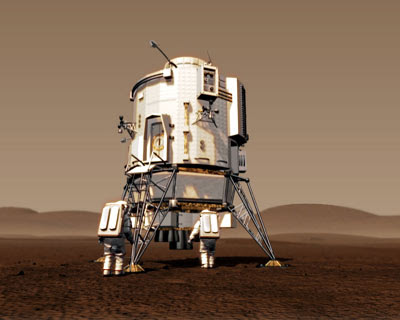Will Hollywood Ever Be Accurate About Space?

As a change of pace from Mars exploration mission architecture, and by popular demand - or, at any rate, the suggestion of regular commenter Geoffrey S H - a few thoughts on Hollywood and outer space.
First, the short answer to the question posed in the title: Yes - when it has to be. That is, when the audience knows the reality, or at least has some notion of the reality, and would laugh at obvious faketude.
Which will not be for some time to come - namely, when enough people are traveling in space for actual space footage to become a familiar commonplace.
Until then, Hollywood will be completely indifferent to space realism. See this page at Atomic Rockets. Scroll down about halfway, to Hollywood Reasons.
In principle, how real spacecraft maneuver should already be familiar. We have been performing successful rendezvous and docking maneuvers since 1965, meaning 46 years of impeccably realistic maneuvers by spacecraft in space, and in close proximity to each other. But so far as I'm aware, in none of these operations has a third spacecraft been handy nearby to film the maneuver from a photogenic angle.
More to the point, rendezvous and docking is conceptually cool, but in purely visual terms it is only slightly more exciting than watching paint dry.
The day may come when docking and undocking are standard bits of stock footage, used the same way snippets of an airliner pulling up to the gate are used, to convey arrival or departure of a character. But the time and attention given to such snippets will be minimal, unless justified by some plot complication - say, a squad of police in hot pursuit, trying to arrest someone before a departing ship undocks. In which case the whole scene will get a lot more attention.
How accurate this attention will be is another matter. The scenario itself invites some interesting legal and practical questions. When a plane pulls away from the gate, or a ship from a pier, it is still within the jurisdiction of the airport or harbor - but once a spacecraft unlatches from a station, is it still within the station's jurisdiction?
Enforcing jurisdiction has its own points of interest, but in any case, don't expect Hollywood to care, any more than most cop movies today care about what would really happen in equivalent situations.
Anyway, space cops are a sideshow. Let's be honest: What you're really interested in is space battles. The usual Hollywood treatment of these, from Trek and Star Wars and on through various TV shows, is pretty risable. Space dreadnoughts fight at Trafalgar range, space fighters do barrel rolls and Immelmann turns, and an implausibly spectacular (and, especially, noisy) time is had by all.
There are a few honorable exceptions - a silent rifle shot in Firefly, and most notably the Starfury fighters in Babylon 5, which sometimes actually maneuvered like spacecraft.
How did they get away with that? I'll venture a two-part answer: First, the fliparound and retrofire maneuver is visually impressive and somewhat self-explanatory - you don't need to understand the underlying physics to appreciate its coolness. Second, J. Michael Straczynski, or someone in his development team, guessed that a small but significant part of the show's core audience would appreciate the maneuver and the logic behind it, and say "Way Cool!" Which would cue in other viewers that something way cool had just happened.
Which is useful guidance on how to make similar effects appear again. You will never convince Hollywood to replace cool by non-cool for the sake of mere realism. You have to offer a cool alternative to the existing conventions.
As one example, combat range. I can think of scenarios where spacecraft might start shooting at very close range (say, an exchange of prisoners/hostages goes pear shaped, or whatever). But most space combat situations imply Stupendous Range, or at least enormous range, certainly far too great for the rival combatants to both show visible details in the same frame.
World War II newsreel footage already solved this problem: Good guy battleship shown firing toward the right, cut to bad guy battleship shown firing to the left. We know and understand this convention - but you still need to convince the director to forego showing both the Enterprise and the Klingon battlecruisers at once.
My solution would be to use a handy moon as a prop. (It isn't like moons are hard to find out there.) Now you can have one ship firing in the direction of a distant moon - then cut to the other ship firing back, with the moon as a nearby planet-scape. Stupendous Range is instantly and vividly conveyed.
Stepping back a bit, I should acknowledge that what exactly constitutes 'realistic' space combat is rather more complex and ambiguous than simply making a nod to Sir Isaac Newton.
As has been previously discussed/argued about here on this blog, space warfare does not just involve physics; it also involves power politics and economics. In the Plausible Midfuture, at least, any space warfare is most likely to a) be fought between rival Earth powers, b) be confined almost exclusively in Earth orbital space, and c) involve only robotic or remote-piloted vehicles. None of which offers much place for space armadas, colonial rebellions, or other classic SF space warfare tropes.
All of which having been said, we'd still be inclined to stand up and cheer for space battles that have even a superficial ring of plausibility.
Good plot and characterization might also be helpful, but that is another discussion.
Anyway, discuss.
The image, via Atomic Rockets, is a scene from The Wrath of Khan - concerning 'three-dimensional thinking' in a battle between spacecraft with a thoroughly two-dimensional aesthetic.



